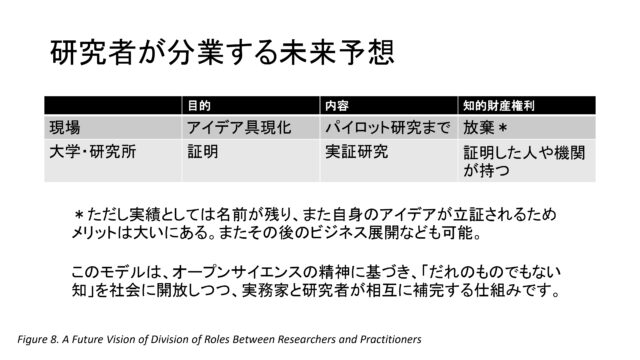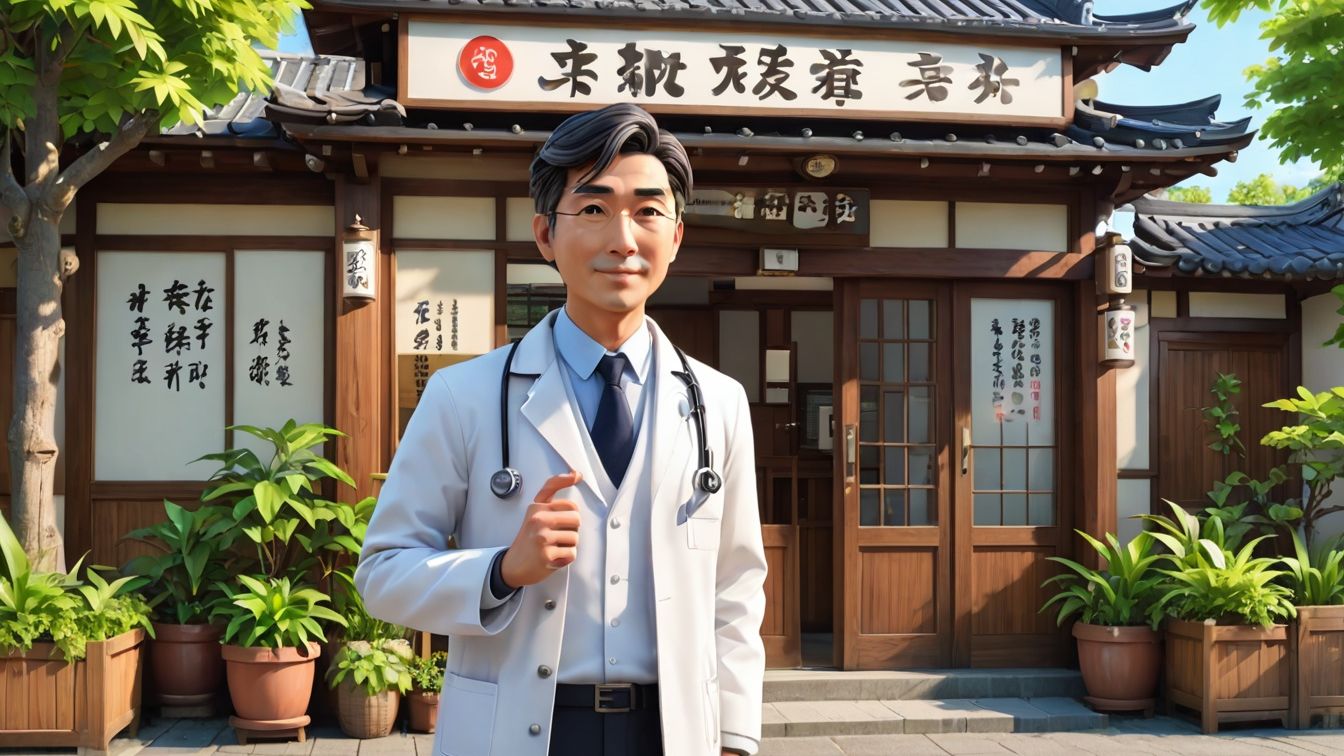なぜ私は今、プレプリントを出したり、自分で研究を始めようとしているのか?
私は「肩書き」や「学術的評価」が欲しくて研究をしているわけではありません。ただ、もっと臨床を面白くしたい、それだけなんです。日々の現場には、教科書や論文では拾えない、たくさんの気づきがあります。その一つひとつの問いや発見を、ちゃんと形にして、次の人たちに引き渡していきたい。臨床家がもっと自由に、自分の疑問から研究を始められるようになったら、鍼灸や伝統医学はもっと進化するはずです。だから私は、オープンサイエンスの発想に基づいて、「現場の知」を研究者とともに共有・発展させていく新しいモデルを提案しています。

このモデルでは、現場のアイデアや仮説は自由に共有され、研究者がその内容を検証し、社会的な知として育てていきます。知的財産権の主張をするつもりはありせんが、アイデアの提供者の名前や理念は記録に残り、信頼や信用というかたちで積み上がっていきます。また、その理論が立証されれば、再び臨床に戻り、商品化・教育・実装へとつながっていく可能性もあります。
私は2025年4月14日現在、鍼灸臨床から生まれた思考フレームアイデアを10以上ストックしておりこれからも臨床の合間をぬって、ブログやプレプリントとして発信していきます。
例えば:
・IMRE(Integrated Meaning-Relational Evaluation 、意味と関係の統合評価モデル):鍼灸や伝統医療における「意味」と「関係性」を構造的に評価するモデルです。患者の期待や満足度、施術者の信念や技術評価など主観的な要素をスコア化し、施術プロセス全体の意味生成を可視化します。EBMの補完として、語りや関係の構造に注目し、共感や気づきを評価可能にする臨床フレームです。
・中医学アブダクション推論と思考フレーム:世界観・現象学・解釈学・アブダクションという4層構造に基づき、文脈的かつ意味生成的に診断を行う思考モデルです。患者の経験や背景を踏まえた仮説生成型推論であり、AIにどこまで人間の思考構造を再現できるかという探究にもつながります。
・医療連携と中医学概念を使って、診断名がなくても患者に安心してもらうためのプロトコル原案:診断名がつかず不安を感じる患者に対し、中医学的な説明と「治療の見通し」を言語化することで安心感を与えるプロトコルを提案します。「3つの領域モデル」で適応範囲を明確化し、セルフケアや段階的治療の可視化を通じて、患者の主体的関与を促します。必要に応じて医療連携も行い、中医学的診断を丁寧に伝えることで、診断名がなくても納得と安心のある治療を実現します。
もしこのような私の姿勢に共感してくださる方、興味のある方がいましたら、ぜひお気軽にご連絡ください。一緒に、現場から未来をつくる仕組みを育てていきましょう。
田無北口鍼灸院 白石健二郎
kenjiroushiraishi@hotmail.co.jp
I am not pursuing research for the sake of academic titles or scholarly recognition. All I want is to make clinical practice more engaging. In the treatment room, there are countless insights and discoveries that textbooks and academic papers often overlook. I want to shape these individual questions and findings into something meaningful, and pass them on to future practitioners.
If more clinicians could freely initiate research based on their own questions, acupuncture and traditional medicine would undoubtedly evolve further. That is why I am proposing a new model based on the spirit of open science—one in which practitioners and researchers collaborate to share and develop the knowledge born from the clinical field.
In this model, ideas and hypotheses from the field are freely shared, and researchers validate them to transform practical insights into public knowledge. While I do not claim intellectual property rights, the names and visions of those who contribute ideas are recorded and preserved, building trust and credibility. Once a theory is validated, it may return to the clinic and lead to implementation in practice, product development, or education.
As of April 14, 2025, I have more than 10 original conceptual frameworks born from my clinical experience, and I plan to continue publishing them through blog posts and preprints as time permits.
For example:
IMRE (Integrated Meaning–Relational Evaluation): A model designed to structurally evaluate the “meaning” and “relational dynamics” present in traditional medical practice. It quantifies subjective elements such as the patient’s expectations and satisfaction, as well as the practitioner’s beliefs and technical confidence. IMRE visualizes the entire therapeutic process and complements EBM by providing a way to assess narratives and relationships that foster empathy and insight.
Abductive Reasoning and Frameworks in Traditional Chinese Medicine: A layered diagnostic model integrating worldview, phenomenology, hermeneutics, and abduction. It offers a context-sensitive and meaning-generating approach to clinical reasoning, and raises the question of whether AI can ever replicate this human cognitive structure.
A Protocol for Reassuring Patients Without a Diagnosis Using Medical Collaboration and TCM Concepts: This framework proposes how to provide psychological reassurance to patients without a formal diagnosis through clear explanations rooted in Chinese medicine. It uses a “three-domain model” to define therapeutic scope, integrates self-care strategies, and visualizes treatment steps. The goal is to offer patients a sense of control, clarity, and peace of mind—while collaborating with medical professionals when necessary.
If any part of my approach resonates with you, I would be delighted to connect. Together, let’s build a system that bridges practice and research—one that brings the future of medicine closer to where healing actually happens.
Kenjiro Shiraishi
Tanashi Kitaguchi Acupuncture and Moxa Clinic
kenjiroushiraishi@hotmail.co.jp
